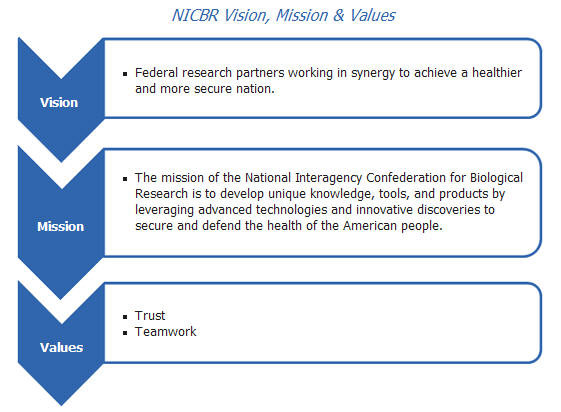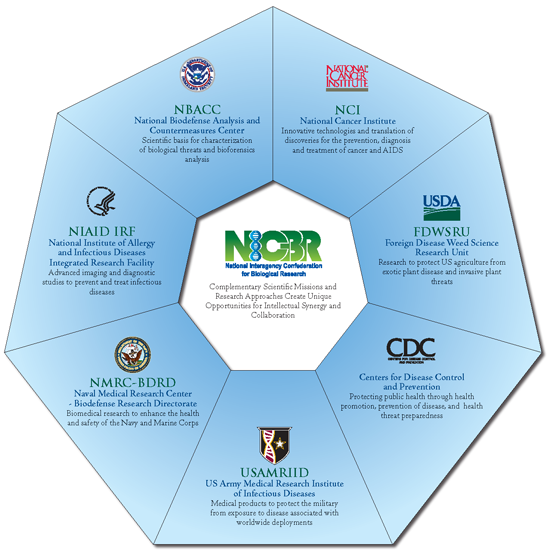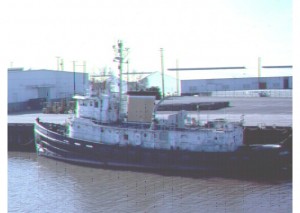By Barbara H. Peterson
In what should amount to a wildly imaginative narrative created by an overzealous science fiction aficionado, the following agencies, their connections, and past actions are real, none-the-less.
Imagine, if you will, a world in which health sciences, disease control, cancer research, bio-weapons research, vaccine development, biotechnology, food and agriculture, national defense, and chemical companies all work together under the military. Then imagine, if you will, that a certain chemical company under the guise of a life sciences operation, produces an herbicide/defoliant for military use so destructive and highly toxic that contact with it causes cancer, diabetes and birth defects. And then that same chemical/life sciences company partners with a funding corporation whose team members include the ex-partner of the inventor of the world’s first completely synthetic organism, which was recently unleashed in the ocean and has since turned its ever-hungry sites on human flesh. Then imagine that same company with a monopoly on our food supply…
Sound like an episode out of the Twilight Zone or Dr. Who? Well, it’s not. It’s real, and it’s documented.
Fort Detrick and the NICBR
The Fort Detrick National Interagency Confederation for Biological Research (NICBR) is a conglomeration of agencies all under the umbrella of the military industrial complex.
Members of the NICBR board of directors are:
- Director, National Cancer Institute (NCI)
- Director, National Institute of Allergy and Infectious Diseases (NIAID)
- The Surgeon General of the Army (TSG)
- Administrator, Agricultural Research Service (ARS), US Department of Agriculture (USDA)
- Director, Office of Research and Development, Science and Technology Directorate, US Department of Homeland Security (DHS)
- Director, Centers for Disease Control and Prevention (CDC)
The Constitution acknowledges that signatories may be expanded in the future to include other agencies or institutes engaged in medical research and/or advanced biotechnology at Fort Detrick.Signatories to the Constitution have representation on the Fort Detrick Interagency Coordinating Committee (FDICC), which is the primary venue for interagency communication. The FDICC designates subcommittees as necessary to further facilitate effective interagency cooperation among the signatories. The hierarchy of the confederation’s communications and decision making process is depicted below.
According to Veterans Today, “From 1943 to 1969, Fort Detrick was the nation’s center for offensive and biological warfare research, and defensive biological warfare research is still an active part of the installation today.”
The Fort Detrick NICBR mission statement: “The mission of the National Interagency Confederation for Biological Research is to develop unique knowledge, tools, and products by leveraging advanced technologies and innovative discoveries to secure and defend the health of the American people.”
And it seems to have created its own Constitution, a small portion of which can be found at the website:
In May 2002, a working group was formed among the medical research and advanced biotechnology organizations at Ft. Detrick to explore and coordinate areas of common interest. The collaborative efforts of these federal agencies were formalized in the Constitution for the Coordination of Interactions Among Medical Research Organizations Colocated at Fort Detrick, Maryland (the Constitution). The vision of the group was established in the Constitution as follows:“To enhance public health, medical research, and biotechnology development among research organizations at Fort Detrick by establishing a loose confederation of research organizations who are willing to discuss areas of common interest and, if of benefit to their organizations, work in collaboration to coordinate and synchronize scientific interaction in areas of mutual interest.”The Constitution also cites the following objectives:To establish an understanding and a process for coordinating and synchronizing areas of common interest among the federal agencies involved in medical research and/or biotechnology at Fort Detrick in order to encourage most efficient management practices, foster scientific interchange, and maximize productivity of research and biotechnology development among the signatories.To promote federal interagency coordination in facilities planning, technology sharing, and sharing of expertise among the signatories.To minimize duplication of effort, technology, and facilities among the signatories.
The Monsanto Connection
To gain a realistic look at just what this “benevolent” agency might be capable of, let’s take a brief look back in time. Take the case of Mr. Abram:
Abram receives compensation from the U.S. Department of Veterans Affairs for his military service-connected exposure to Agent Orange, a defoliant used in Vietnam that has since been linked to numerous health problems.But Abram never set foot in Vietnam.He served at Fort Detrick, which, according to the VA, likely exposed him to Agent Orange.Abram, 68, was drafted into the Army and served at Fort Detrick from November 1962 to 1964. He is not allowed to talk about the work he did at Fort Detrick, but Abram said he enjoyed walking around the greenhouses in his spare time.He still gardens to this day, and he liked seeing the different flowers the Army grew — which were often healthy and beautiful one day and dead the next.
Agent Orange is an herbicide and defoliant created specifically for warfare.
Agent Orange is the code name for one of the herbicides and defoliants used by the U.S. military as part of its herbicidal warfare program, Operation Ranch Hand, during the Vietnam War from 1961 to 1971. Vietnam estimates 400,000 people being killed or maimed, and 500,000 children born with birth defects.
In 1943 plant biologist Arthur Galston began studying the compound triiodobenzoic acid as a plant growth hormone, in an attempt to adapt soybeans to a short growing season. Galston found that excessive usage of the compound caused catastrophic defoliation — a finding later used by his colleague Ian Sussex to develop the family of herbicides used in Operation Ranch Hand. Galston was especially concerned about the compound’s side effects to humans and the environment.A 50:50 mixture of 2,4,5-T and 2,4-D, it was manufactured for the U.S. Department of Defense primarily by Monsanto Corporation and Dow Chemical. The 2,4,5-T used to produce Agent Orange was later discovered to be contaminated with 2,3,7,8-tetrachlorodibenzodioxin, an extremely toxic dioxin compound.
Ft. Detrick has admitted that the Army tested Agent Orange on base. But Agent Orange is not the only harmful substance that was tested by Fort Detrick.
Human Guinea Pigs
In the 1950s, the Seventh-day Adventist Church struck an extraordinary deal with the US Army. It would provide test subjects for experiments on biological weapons at the Fort Detrick research centre near Washington DC.
The volunteers were conscientious objectors who agreed to be infected with debilitating pathogens. In return, they were exempted from frontline warfare.Fort Detrick was working on weapons it could use in an offensive capacity as well as ways of defending its troops and citizens.Hotel Anthrax uses declassified documents, evidence from Senate investigations and personal testimony to trace the American bio-weapon programme during this period.The research involved anthrax, other lethal bacteria and biological poisons. The scientists also conducted tests on an unsuspecting American public…But it wasn’t just the white coat volunteers and sailors who were subject to experiments. Scientists used what they thought was a harmless simulant in major bio-weapon tests across US cities and on public transport.It was a bacteria which they believed was harmless but which would mimic the dispersal of deadly biological agents such as anthrax.But later research showed that the strain of Bacillus globigii, or BG, did pose a risk to people who were ill or whose immune system was failing.The programme hears from a retired scientist whose job in 1966 was to drop light bulbs carrying BG on the New York subway. He would then measure how the simulant might spread in the event of a real attack, using a motorised vacuum devise concealed inside a suitcase.Wally Pannier, 82, recalls: “We’d just drop light bulbs with the powdered stimulant inside.
Fitted out for atmospheric diffusion testing. Note the extended deckhouse. This was the laboratory. Copyright © 1999 Superior Digital Processing Source: http://tugboatsf.us/lt2080.htmThe official statement on Project SHAD’s purpose was “…to identify U.S. war ships vulnerabilities to attacks with biological or chemical warfare agents and to develop procedures to respond to such attacks while maintaining a warfighting capability.” 134 tests were planned initially, but only 46 tests were actually completed. In these tests, chemical and biological agents were introduced to military personnel, who were at the time ignorant that they were involved in such an experiment. Nerve agents and chemicals include, but are not limited to, VX nerve gas, Tabun gas, Sarin, Soman, and the marker chemicals zinc sulfide, cadmium sulfide, and QNB. Biologics include Bacillus globigii, Coxiella burnetti (which causes Q fever), and Francisella tularensis (which causes tularemia or ‘rabbit fever’).
What Project SHAD succeeded in doing was poisoning our own military personnelwithout their knowledge. “Of the 4,300 sailors known to be involved, to our knowledge, only 622 have been notified.”
In 1994, the Senate Committee on Veterans’ Affairs conducted what it described as a comprehensive analysis stretching back 50 years of the extent to which veterans were exposed to potentially dangerous substances without knowledge or consent. It was chaired by John D Rockefeller.In a damning report, it concluded that the Department of Defense (DoD) repeatedly failed to comply with required ethical standards when using human subjects in military research – and that the DoD demonstrated a pattern of misrepresenting the danger of various exposures and continued to do so. LINK
Secret Military Experimentation
But what about ethics? Can the military simply experiment on the American public at will? It would seem so.
PUBLIC LAW 105—85—NOV. 18, 1997: USE OF HUMAN SUBJECTS FOR TESTING OF CHEMICAL OR BIOLOGICAL AGENTS
SEC. 1078. RESTRICTIONS ON THE USE OF HUMAN SUBJECTS FOR TESTING OF CHEMICAL OR BIOLOGICAL AGENTS.(a) PROHIBITED ACTIVITIES.—The Secretary of Defense may not conduct (directly or by contract)(1) any test or experiment involving the use of a chemical agent or biological agent on a civilian population; or(2) any other testing of a chemical agent or biological agent on human subjects.(b) EXCEPTIONS.—Subject to subsections (c), (d), and (e), the prohibition in subsection (a) does not apply to a test or experiment carried out for any of the following purposes:(1) Any peaceful purpose that is related to a medical, therapeutic, pharmaceutical, agricultural, industrial, or research activity.(2) Any purpose that is directly related to protection against toxic chemicals or biological weapons and agents.
Notice that the exceptions negate the prohibitions. If an act is for a purpose labeled “peaceful,” such as for supposed “defense” experimentation, medical (vaccines), therapeutic, pharmaceutical (drugs), agricultural (GMOs), industrial, or research activity (this encompasses just about everything else) or law enforcement purposes, the use of biological agents is allowed on the public most likely without their permission or consent.
More experiments HERE.
Monsanto and Atlas Venture
 And now Monsanto has recently signed a deal with Atlas Venture for funding of, well, who knows? Monsanto does. And Monsanto isn’t telling. But we do know that it will most likely be some sort of “disruptive innovation” because that is Atlas Venture’s specialty. “Atlas Venture is an early stage investment firm dedicated to financing disruptive innovation in Life Sciences and Technology.”
And now Monsanto has recently signed a deal with Atlas Venture for funding of, well, who knows? Monsanto does. And Monsanto isn’t telling. But we do know that it will most likely be some sort of “disruptive innovation” because that is Atlas Venture’s specialty. “Atlas Venture is an early stage investment firm dedicated to financing disruptive innovation in Life Sciences and Technology.”Definition of disruptive innovation/technology:
A new technology that has a serious impact on the status quo and changes the way people have been dealing with something, perhaps for decades. Music CDs all but wiped out the phonograph industry within a few years, and digital cameras are destined to eliminate the film industry. The most disruptive technologies in history have been the telephone, the computer (and all of its offshoots) and the Internet.
BP, Synthetic Genomics, and Atlas Venture
 Just where does BP and the Gulf fit into this picture? Well, it just so happens that BP has a long term research and development deal with Synthetic Genomics, who’s founder is Craig Venter, who created Synthia – the flesh eating bacteria in the Gulf.
Just where does BP and the Gulf fit into this picture? Well, it just so happens that BP has a long term research and development deal with Synthetic Genomics, who’s founder is Craig Venter, who created Synthia – the flesh eating bacteria in the Gulf.For more information about the Gulf Blue Plague and Synthia, the synthetic organism created by Craig Venter, see “The BP/Synthetic Genomics Project: The Gulf Blue Plague” by Michael Edward.
Craig Venter of Synthetic Genomics co-founded Celera Genomics with Atlas Venture team member Peter Barrett. These men have a mutual history of partnership in sequencing the human genome.
Peter Barrett (co-founder of Celera Genomics with J. Craig Venter of Synthetic Genome) is a Partner in the Life Sciences group and joined Atlas Venture in 2002. He spent 20 years in operating roles before becoming passionate about genomics and co-founding the first company to sequence the human genome, Celera Genomics.Celera was founded in 1998 with the mission to sequence the human genome and provide clients with early access to the resulting data. Using state-of-the art sequencing technology supplied by Applied Biosystems and sophisticated internally-developed informatics, Celera pioneered the application of “shotgun” sequencing. While this “shotgun” approach was widely criticized at the time, it has subsequently become a standard method for sequencing complex organisms that is now broadly accepted and routinely used by many of the same scientists who originally scorned the approach. Scores of organisms have now been sequenced using the Celera “shotgun” method.
Accidental Mayhem or Planned Genocide?
Is the ongoing BP incident an experiment gone wrong, or a planned genocidal maneuver? We have yet to find out. We do know that Peter Barrett, who was involved in sequencing the human genome with Craig Venter, the man who created Synthia, is a member of Atlas Venture, the company now funding Monsanto. And we know that past collaboration between Monsanto and the military industrial complex brought us Agent Orange live and in color. Should we be concerned?
 It seems that certain organizations with a rather homicidal history of mayhem are working together. They say it’s for our good. But let me ask you this: Will these organizations, bonded together like flies on flypaper, suddenly change their course and use what they devise for good? Any technological breakthrough comes with the responsibility of determining just how it will be used. It is a two-edged sword. It can be used for good or bad, and it is up to the owners of that technology to make the right decisions. Have these organizations made the right decisions in the past? Are they making them now? And considering their past actions, can we really expect any good to come of this collaboration? If your answer is yes, then you are not one of the children who grew up playing on the toxic soil so graciously given to the residents of Anniston Alabama by Monsanto, or one of the Veterans who was poisoned by Agent Orange at Fort Detrick, or one of the people living in the Gulf who can’t breath and is having his/her flesh eaten by a synthetic organism unleashed for who knows what reason by BP and Synthetic Genomics.
It seems that certain organizations with a rather homicidal history of mayhem are working together. They say it’s for our good. But let me ask you this: Will these organizations, bonded together like flies on flypaper, suddenly change their course and use what they devise for good? Any technological breakthrough comes with the responsibility of determining just how it will be used. It is a two-edged sword. It can be used for good or bad, and it is up to the owners of that technology to make the right decisions. Have these organizations made the right decisions in the past? Are they making them now? And considering their past actions, can we really expect any good to come of this collaboration? If your answer is yes, then you are not one of the children who grew up playing on the toxic soil so graciously given to the residents of Anniston Alabama by Monsanto, or one of the Veterans who was poisoned by Agent Orange at Fort Detrick, or one of the people living in the Gulf who can’t breath and is having his/her flesh eaten by a synthetic organism unleashed for who knows what reason by BP and Synthetic Genomics.Considering the long term and recent history of these agencies and their proclivity for destruction with no regard for human consequences, one has to wonder… what’s next? Just what is Fort Detrick’s conglomeration of ne’er do wells plotting this time? You can be sure that Monsanto and the rest of the gang aren’t telling. Keeping secrets is what they do best, besides wholesale destruction and mayhem, that is. I can hear the silent screams of nature being ripped apart by madmen, and all I can do is scream back – STOP IT!!! STOP IT NOW!!!
© 2011 Barbara H. Peterson






No comments:
Post a Comment